In Photos: Fukushima Butterflies Plagued With Defects
Pale Butterfly

A pale grass blue butterfly (Zizeeria maha).
Dented Eyes
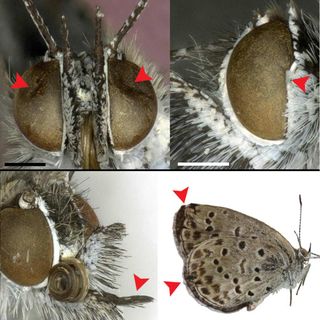
To see how radiation from the 2011 Fukushima nuclear disaster impacted the pale blue grass butterflies, researchers collected adults from 10 localities (Shiroishi, Fukushima, Motomiya, Koriyama, Hirono, Iwaki, Takahagi, Mito, Tsukuba and Tokyo). The Fukushima butterflies showed various abnormalities, shown here from left to right: dented eyes (Shiroishi), deformed left eye (Iwaki), deformed right palpus (Takahagi), and deformed wing shape (Fukushima).
Rumpled Wings
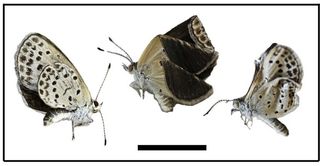
Butterflies from Fukushima, Iwaki and Takahagi showed wing size and shape deformations, including, respectively, a right hindwing that was much smaller than the left hindwing, folded wings, and rumpled wings (right image).
Deformities Abound
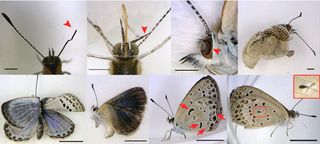
Here, representative abnormalities found in the Fukushima butterflies that ingested contaminated leaves. From top left to right bottom: antenna malformation, right palpus abnormality (a palpus is one of the appendages in front of the insect's head), bent wings, additional bent wings, aberrant wing color patterns, an ectopic black spot beside the discal spot.
Forked Antenna
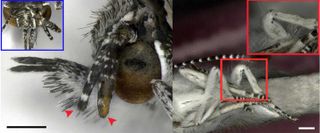
A butterfly from Takahagi, shown in left panel, has a malformation of the left antenna, which is short and forked (arrowheads). Another Takahagi individual has a deformation of the left hindleg femur. (Insets show pictures taken from different angles.)
Bruised Butterflies
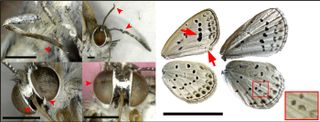
Representative abnormalities seen in the butterflies exposed externally to radiation from the Fukushima nuclear power plant disaster.
Deformed Butterflies
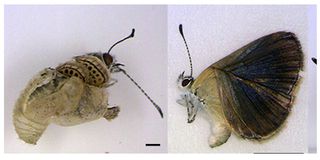
Severe genetic mutations were found in pale grass blue butterflies (Zizeeria maha) found near the Fukushima disaster, with so-called eclosion failure (left) in which the butterfly can't fight its way out of its cocoon, and bent wings (left). See more deformed butterfly images.
Sign up for the Live Science daily newsletter now
Get the world’s most fascinating discoveries delivered straight to your inbox.











